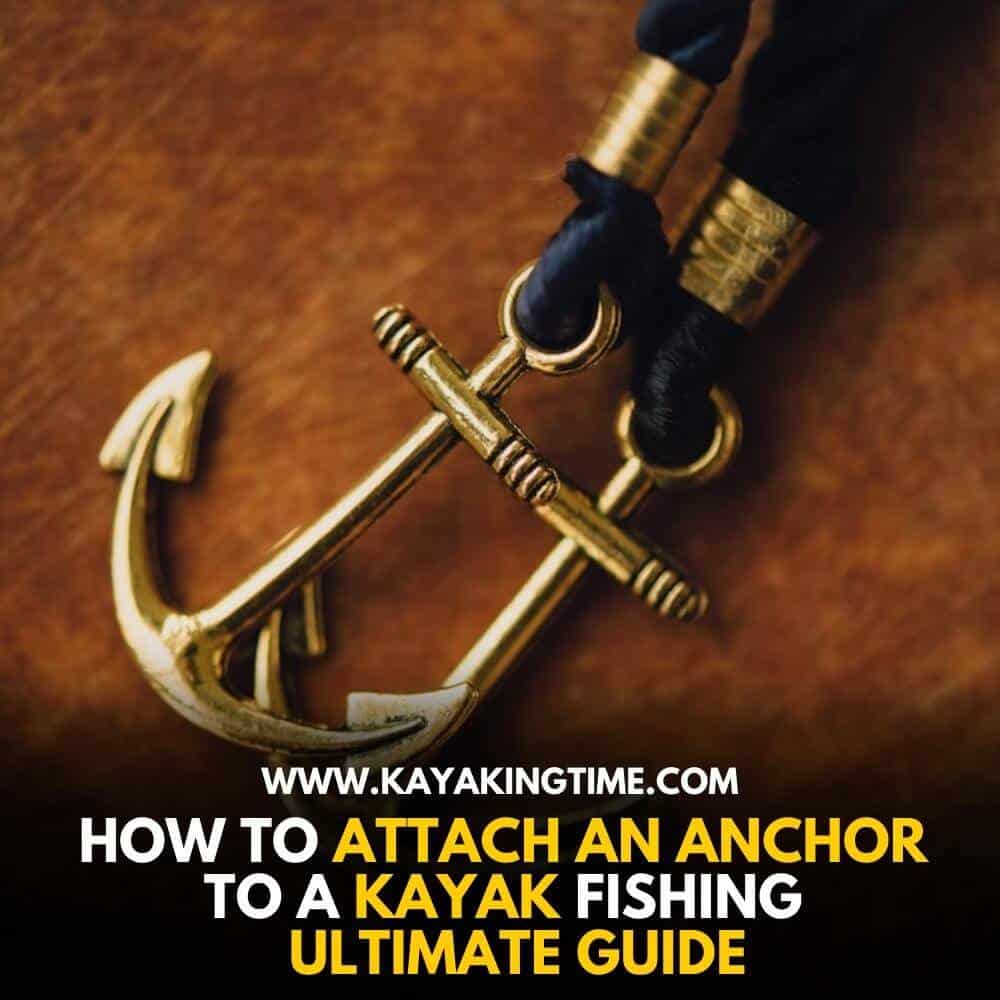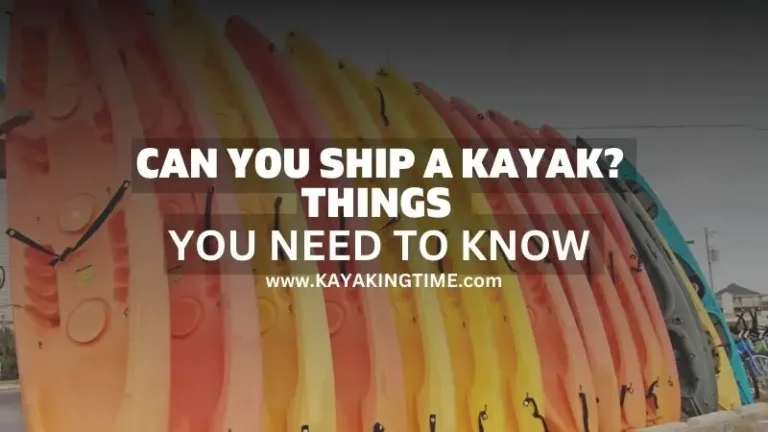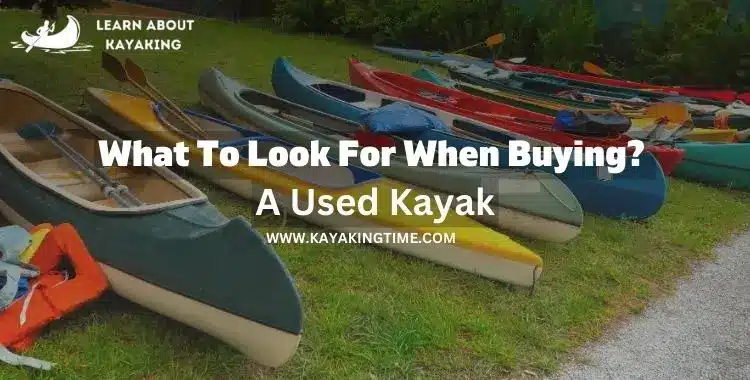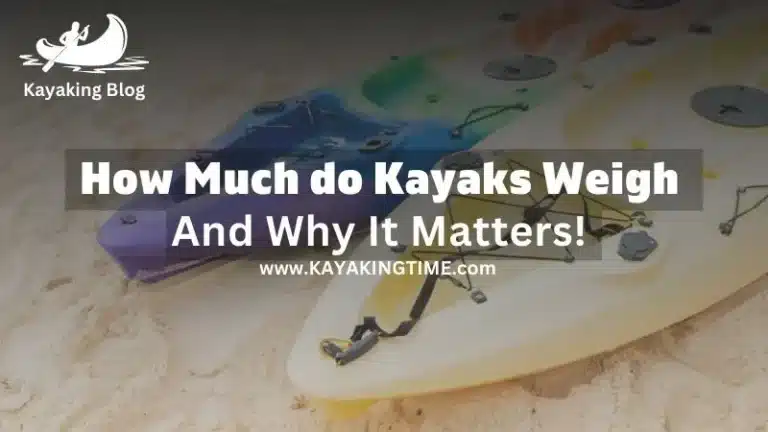How to Attach an Anchor to a Kayak Fishing: The Ultimate Guide
Are you a kayaker who thinks anchoring a kayak is a difficult task to do? In the next fifteen minutes, you will ultimately learn how to attach an anchor to a kayak.
When I was a beginner and learning this, I met many experts and practiced this. No one skillfully guided me. But I will not do like this and will keep this whole process very simple. Whether you’re a beginner or a seasoned kayaker, attaching an anchor to your kayak is an essential skill to know.
This guide will walk you through the step-by-step process of adequately attaching an anchor to your kayak. With these tips, you’ll be able to keep your kayak securely in place, no matter the conditions.
Why do you need an anchor kayak?
An anchor can be incredibly helpful in a number of situations. Here are four reasons why you need an anchor for your kayak.
- First, an anchor can help keep you safe in rough waters. If the wind picks up or the waves get high, an anchored kayak will stay in place. This can be a lifesaver if you are in the middle of a lake or river and cannot make it to shore.
- Second, an anchor can help you fish from your kayak. If you want to stay in one spot and fish, simply drop your anchor and cast your line. You will be able to relax and enjoy fishing without having to worry about drifting away from your desired location.
Types of anchors
One of the first things you need to do when attaching an anchor to your kayak is to choose the right type of anchor for the job. There are four main types of anchors:
1-Grapnel anchor/folding anchor:
The grapnel anchor is a great choice if you need a strong and reliable anchor. It’s also quite easy to use, which is a major advantage.
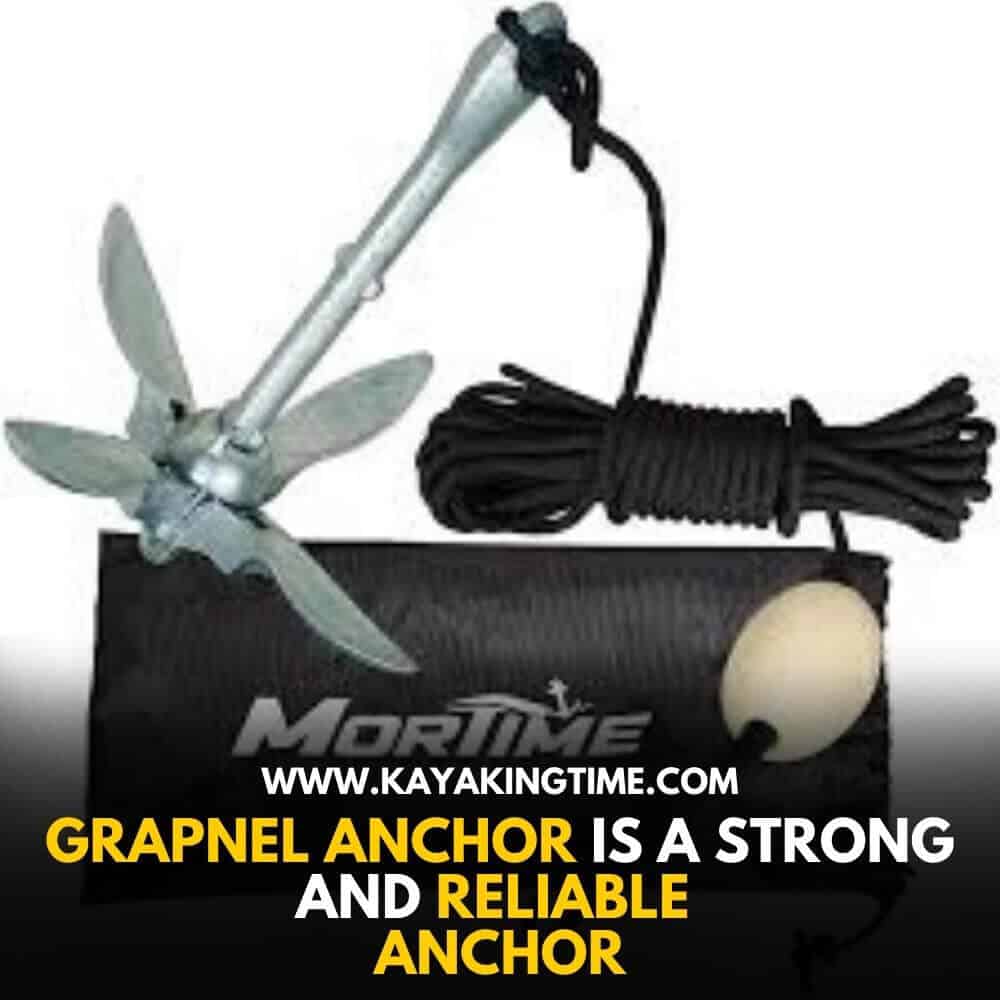
However, it can be difficult to store on your kayak, and it’s not very versatile.
The folding anchor, on the other hand, is much more versatile. It can be used in a variety of different situations, and it’s very easy to store. However, it’s not as strong as the grapnel anchor, so it might not be suitable for all uses.

2-Bruce anchor:
The Bruce anchor is one of the most popular choices for kayak anchoring. It is a reliable and easy-to-use option that can provide a great deal of holding power.
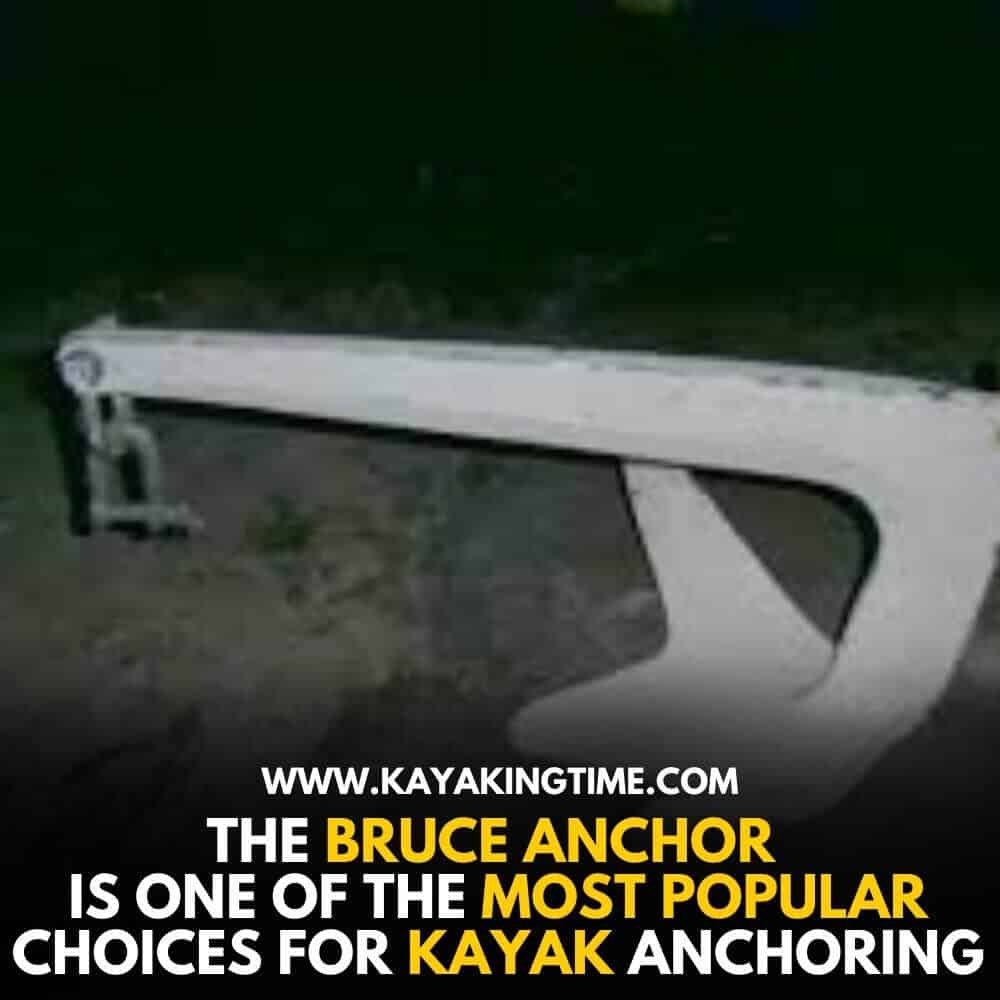
The Bruce anchor gets its name from its inventor, Peter Bruce. He designed it in the 1970s as an improvement on traditional anchors.
The Bruce anchor is made up of two parts: a fluke and a shank.
- The fluke is the part that digs into the bottom,
- while the shank provides stability and keeps the anchor from getting stuck in rocks or other debris.
One advantage of the Bruce anchor over other types is that it can be easily disassembled for storage. This makes it a great choice for kayakers who have limited space in their craft.
3-Mushroom Anchor:
Mushroom anchors are a type of kayak anchor that is often used in shallow water. They are easy to use and can be very effective in holding your kayak in place.

There are a few things to keep in mind when using a mushroom anchor.
- First, they should only be used in water that is not too deep.
- Second, they should be placed on the bottom of the kayak so that they will not move around.
- Third, the rope attached to the mushroom anchor should be long enough so that you can reach the shore or another boat.
Mushroom anchors can be a great way to keep your kayak from drifting away. Just be sure to use them correctly and always have a safe way to get back to shore.
4-Mud Anchors:
Mud anchors are a great way to keep your kayak secure while you’re out on the water. There are a few things to keep in mind when choosing a mud anchor, though.
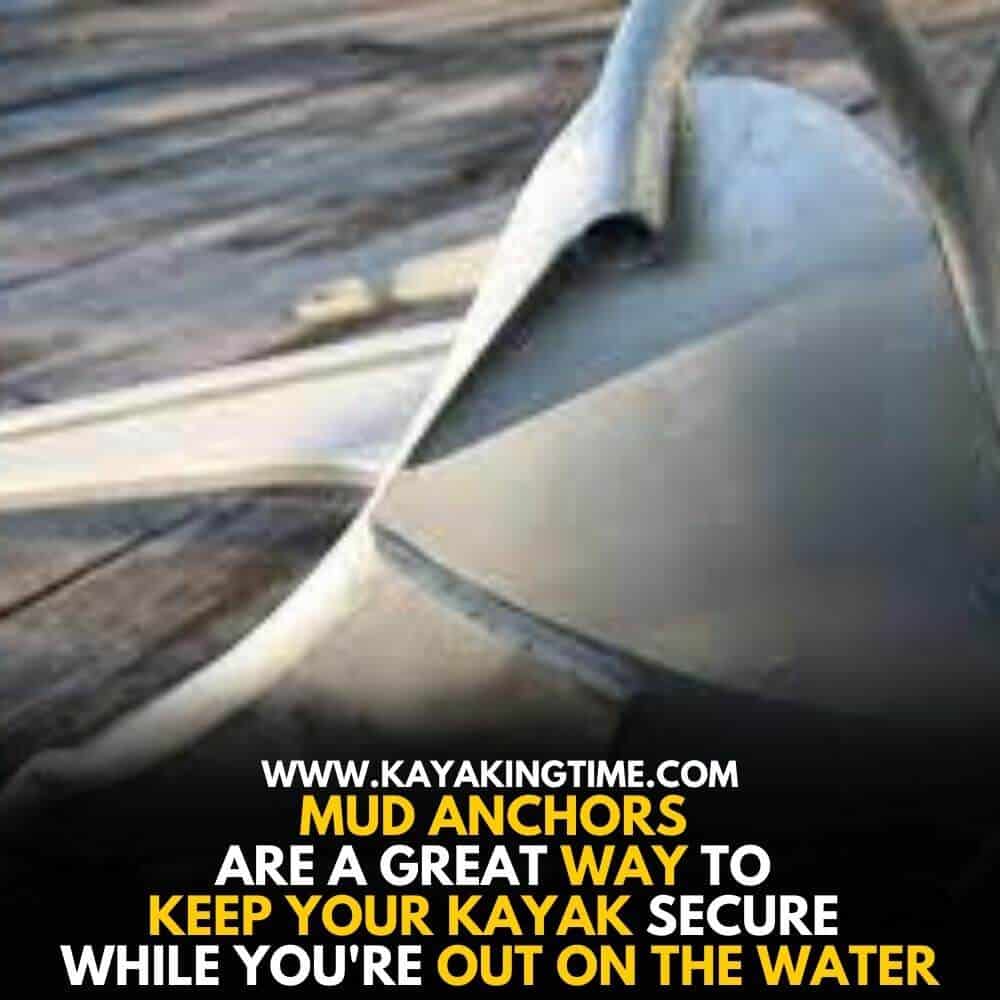
- First, make sure that the anchor is made of durable materials that can withstand the elements.
- Second, choose an anchor that is the right size for your kayak.
- Third, make sure that the anchor is easy to use so that you can get it in and out of the mud quickly.
Choosing an Anchor
When it comes to choosing an anchor for your kayak, there are a few things you need to take into consideration.
- First, what kind of bottom is the anchoring in? If it’s soft mud, you’ll want a different style anchor than if it’s hard to sand.
- Second, how deep is the water? You’ll need a longer rope if it’s deeper water so that your kayak doesn’t swing into shallower areas and get stuck.
- Finally, how windy is it? If it’s very windy, you’ll need a heavier anchor so that it doesn’t drag.
There are a few different types of anchors to choose from depending on your needs. choose from the anchors discussed above.
Things you need to Anchor a Fishing kayak
There are a few things you need to take into consideration when anchoring a fishing kayak.
- The weight of the kayak is important because it will determine how much anchor line you need. A heavier kayak will require more anchor lines than a lighter one.
- The type of bottom is also important. If you are anchoring in the sand, you will need less anchor line than if you are anchoring in mud or rocks.
- The wind and wave conditions are also important to consider when anchoring a fishing kayak. If it is windy, you will need more anchor lines than if it is calm.
Main tools for Anchoring
There are some tools or things to consider before learning the anchoring process.
Anchor Trolley System-(Anchor trolley component)
The kayak’s anchor trolley system is one of the most important components of the boat. It allows you to easily and securely attach your anchor line to the kayak, keeping it in place while you fish or paddle.
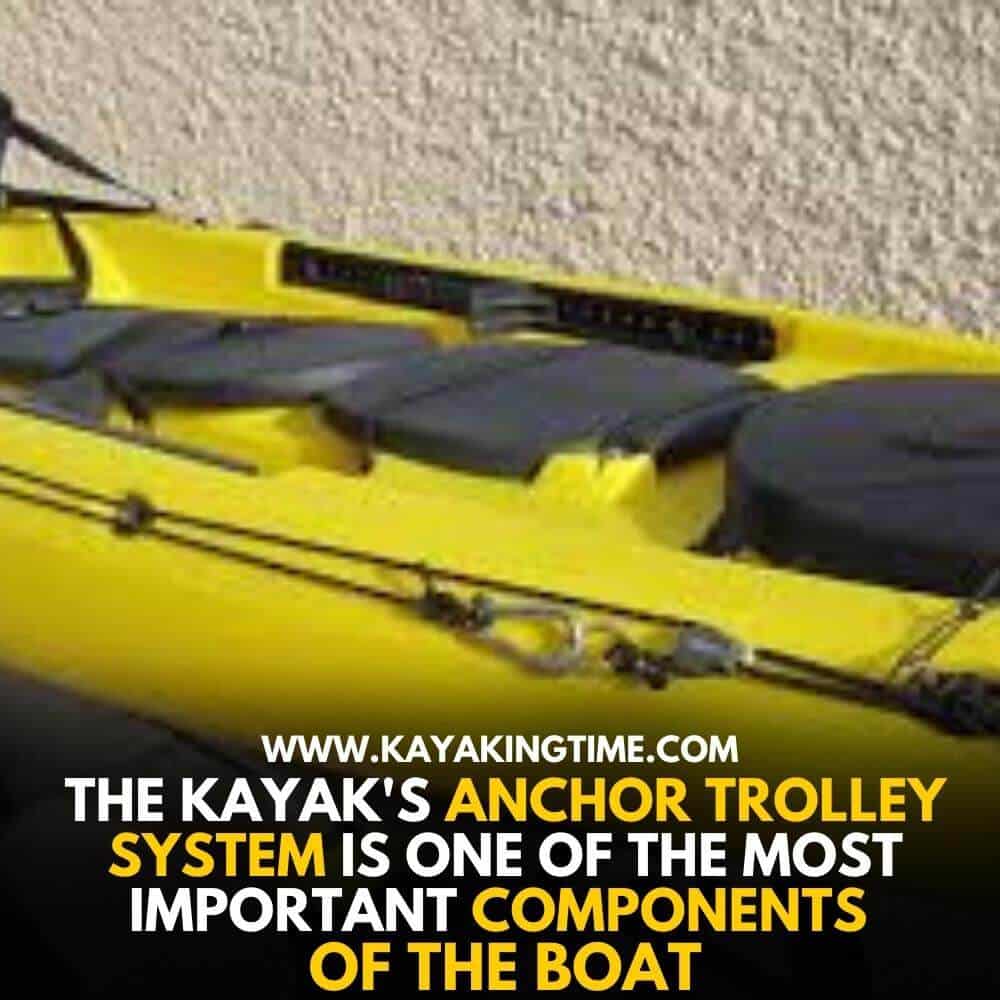
There are a few things to consider when choosing an anchor trolley system for your kayak.
First, you need to decide what type of system you want. There are two basic types: a rope-based system and a track-based system.
Rope-based systems are simpler and cheaper, but they can be more difficult to install and use.
Track-based systems are more expensive, but they’re easier to use and provide a more secure connection for your anchor line.
Once you’ve decided on the type of system you want, you need to choose the right size and shape for your kayak.
Size of Rope For A Kayak Anchor
The size of anchor rope you need for a kayak anchor depends on the type of kayak you have, the water conditions where you’ll be paddling, and the weight of your anchor.
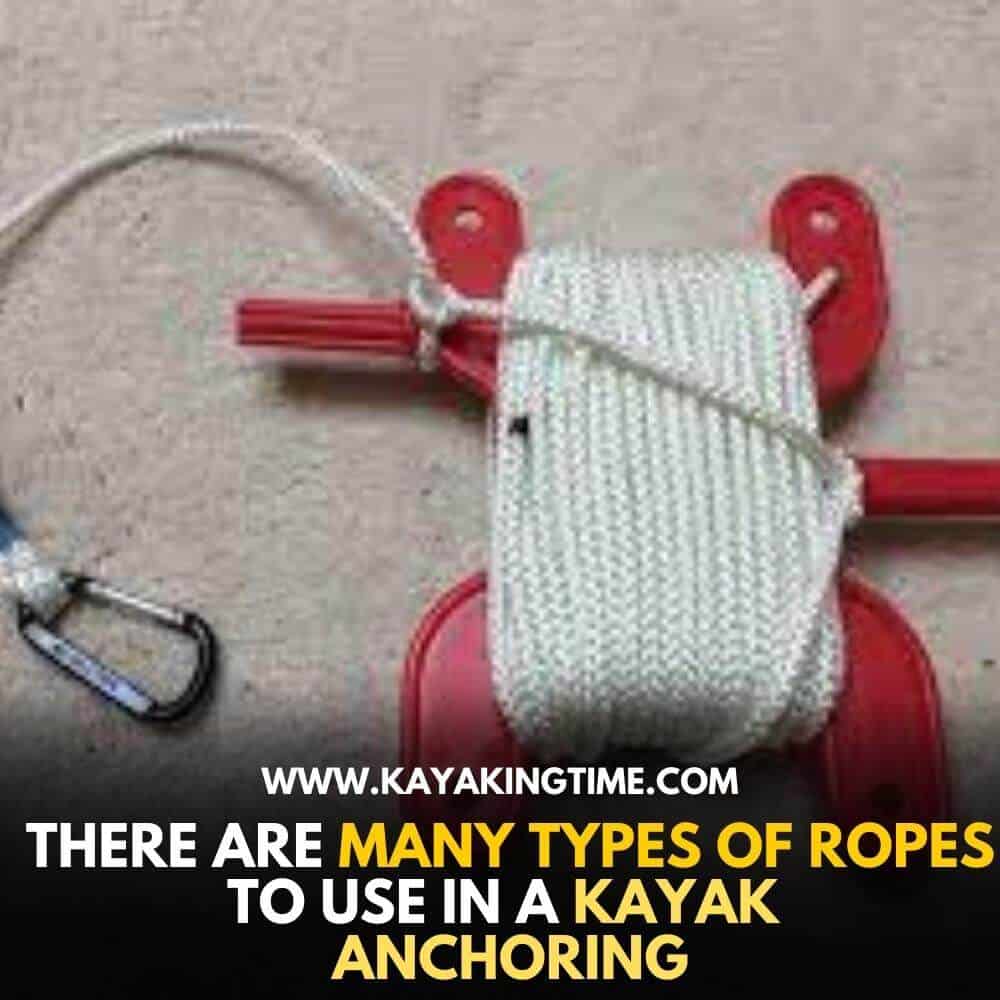
In general, lighter kayaks need lighter anchors and ropes. Heavier kayaks can handle heavier anchors and ropes. If you’ll be paddling in calm water, you can get away with a smaller anchor than if you’re paddling in windy or choppy conditions.
As a general rule of thumb, use a 3/8 inch rope for light anchors in light kayaks paddle boarding in calm waters.
Use a 1/2-inch rope for heavier anchors in heavier kayaks or when conditions are more difficult.
Kind of Rope For A Kayak Anchor
Different types of rope exist for different purposes, and it is important to use the right type of rope for a kayak anchor.
The three main types of rope are natural fiber, nylon, and polyester. Natural fiber rope is made from materials like cotton or hemp and is the most traditional type of rope. Nylon rope is stronger than natural fiber rope and does not stretch as much. Polyester rope is even stronger than nylon and has a very little stretch.
It is important to choose a rope that is strong enough to hold the kayak in place but not so strong that it damages the kayak if there is a lot of movement.
Chain size For A Kayak Anchor
The size of the chain for a kayak anchor is important to consider when out on the water.

The length and weight of the chain will affect how well the anchor holds in different conditions. A heavier chain will provide more holding power but may be difficult to handle when setting or retrieving the anchor.
A longer chain will allow the anchor to reach deeper depths but may be more likely to tangle. Ultimately, it is important to find a balance between weight and length that works best for your kayaking needs.
Kayak Anchor Line Length
There are a few things to consider when determining the length of your kayak anchor line.
- The first is the depth of the water you’ll be anchoring in. If you’re anchoring in shallow water, you won’t need as much line as you would if you were anchoring in deeper water.
- Another thing to consider is the size and weight of your kayak. A heavier kayak will require a longer anchor line than a lighter one.
- And finally, you’ll need to decide how many anchors you want to use. If you’re using multiple anchors, you’ll need more lines than if you’re just using one.
As a general rule of thumb, most kayakers use an anchor line that’s between 10 and 20 feet long.
How to attach an anchor to a kayak
Now I will let you know step by step guide for how to attach an anchor to a kayak:
Step 1: Attach the anchor line
The anchor line is what keeps your kayak stationary in the water and prevents you from being swept away by the current. Attaching the anchor line to your kayak is a simple process that can be done in a few easy steps.
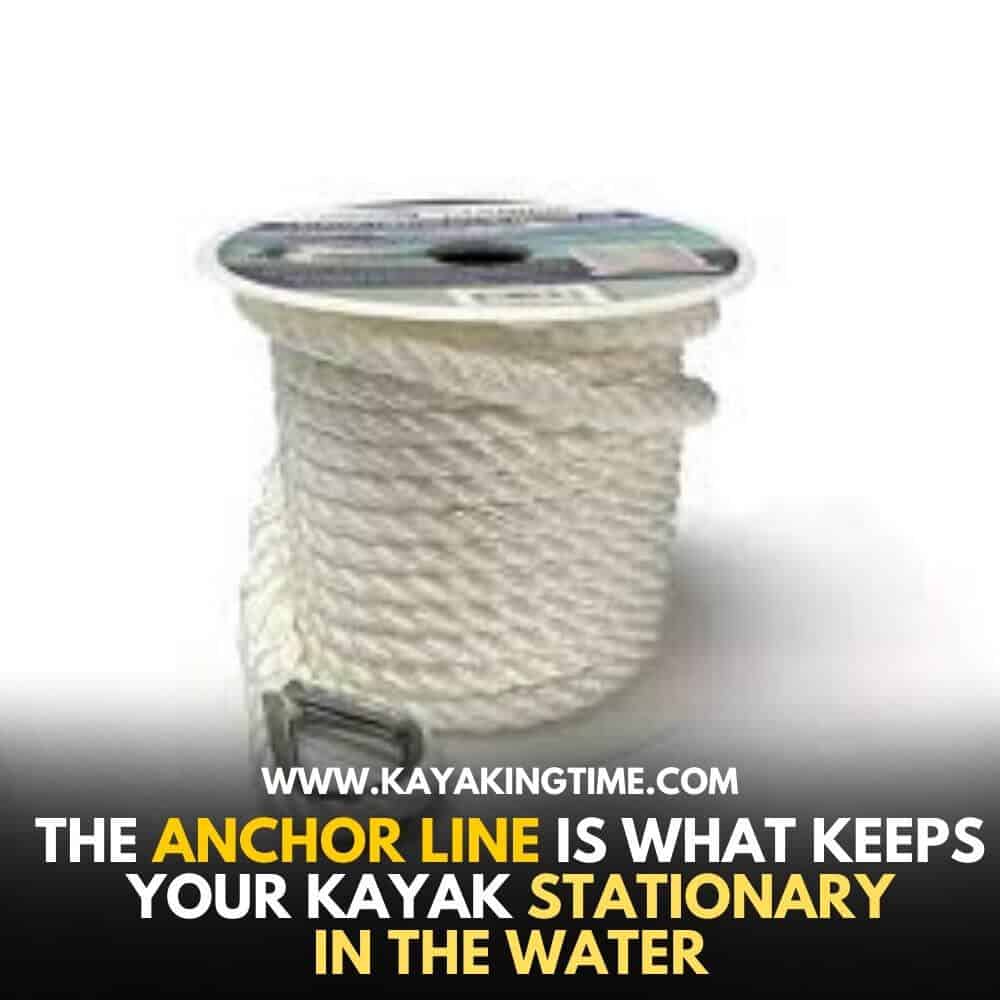
- First, you’ll need to find a suitable location on your kayak to attach the anchor line. The front or back of the kayak is usually the best spot. Once you’ve found a location, take the end of the anchor line and tie it securely to the kayak. Make sure that the knot is tight and will not come undone easily.
- Next, you’ll need to attach the other end of the anchor line to the anchor itself. The anchor line should be attached to the anchor in such a way that it will not slide up or down the anchor line. If you’re using a handheld anchor, then you’ll want to tie a bowline knot around the end of the anchor line.
Step 2: Attach a float to the line
Another major task in anchoring a kayak is, to learn how to attach a float to the line.
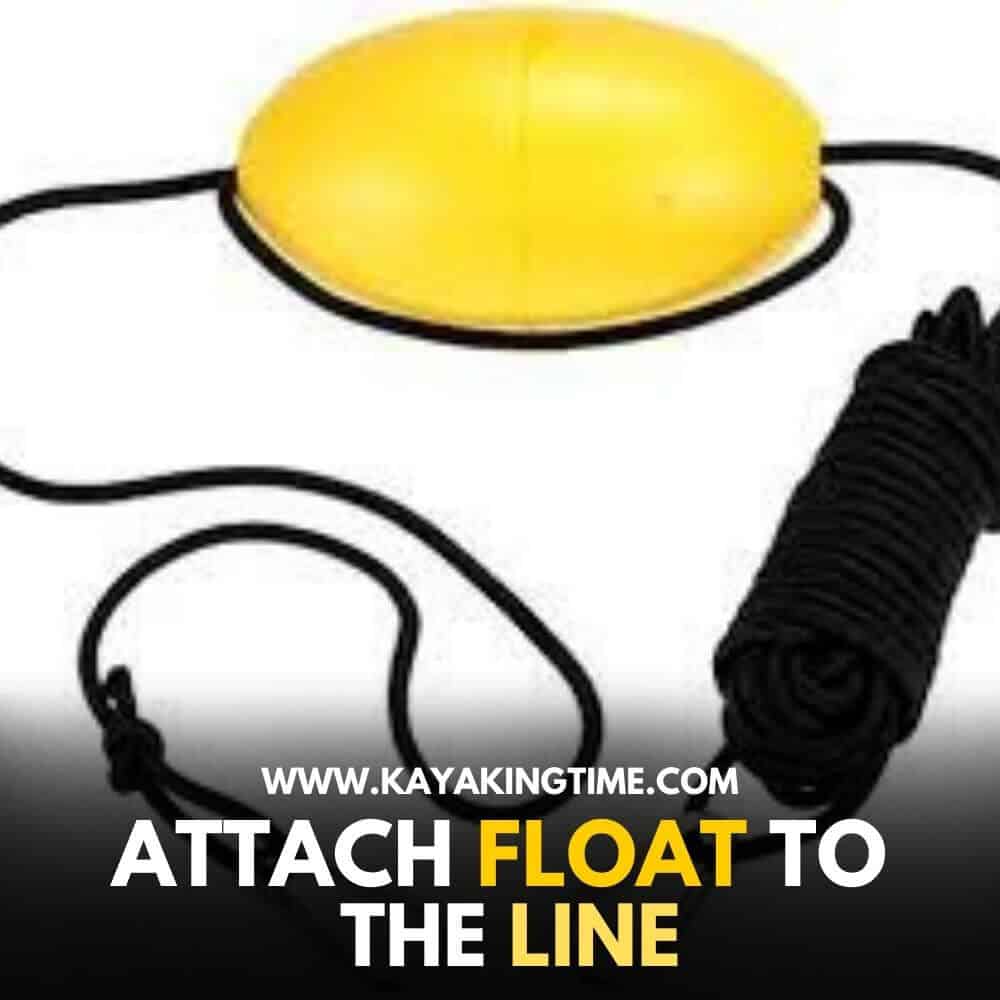
This is important for two reasons: safety and buoyancy. By attaching a float to the line, you’ll be able to keep track of your kayak if it starts to drift away and it will also help keep your kayak afloat if it capsizes. Here’s how to do it:
1. Start by threading the line through the hole in the float.
2. Then, tie a knot at the end of the line, making sure that it’s secure but not too tight.
3. Next, take the other end of the line and tie it around the base of your kayak’s seat. Make sure that this knot is also secure but not too tight.
4. Finally, check and adjust the length of your line to make sure that your kayak floats at a good level in the water. If it’s too low, you may find yourself dragging it to the bottom.
Step 3: Choose the anchoring location for hitting
When choosing an anchoring location, always take into account the depth of the water and make sure there is enough line to reach the bottom.
In general, it is best to choose an area with a sandy or muddy bottom, as this will provide more holding power for the anchor. If you are unsure about the bottom conditions, it is better to err on the side of caution and choose a spot with a deeper depth.
Step 4: Anchor dropping
Now simply drop the anchor into the water and let it sink to the bottom. This method is quick and easy, but it can be difficult to retrieve the anchor if it gets stuck on something underwater.
Important is that You have to leave the line gradually. You will notice the reeling will close after the anchor will reach under the water.
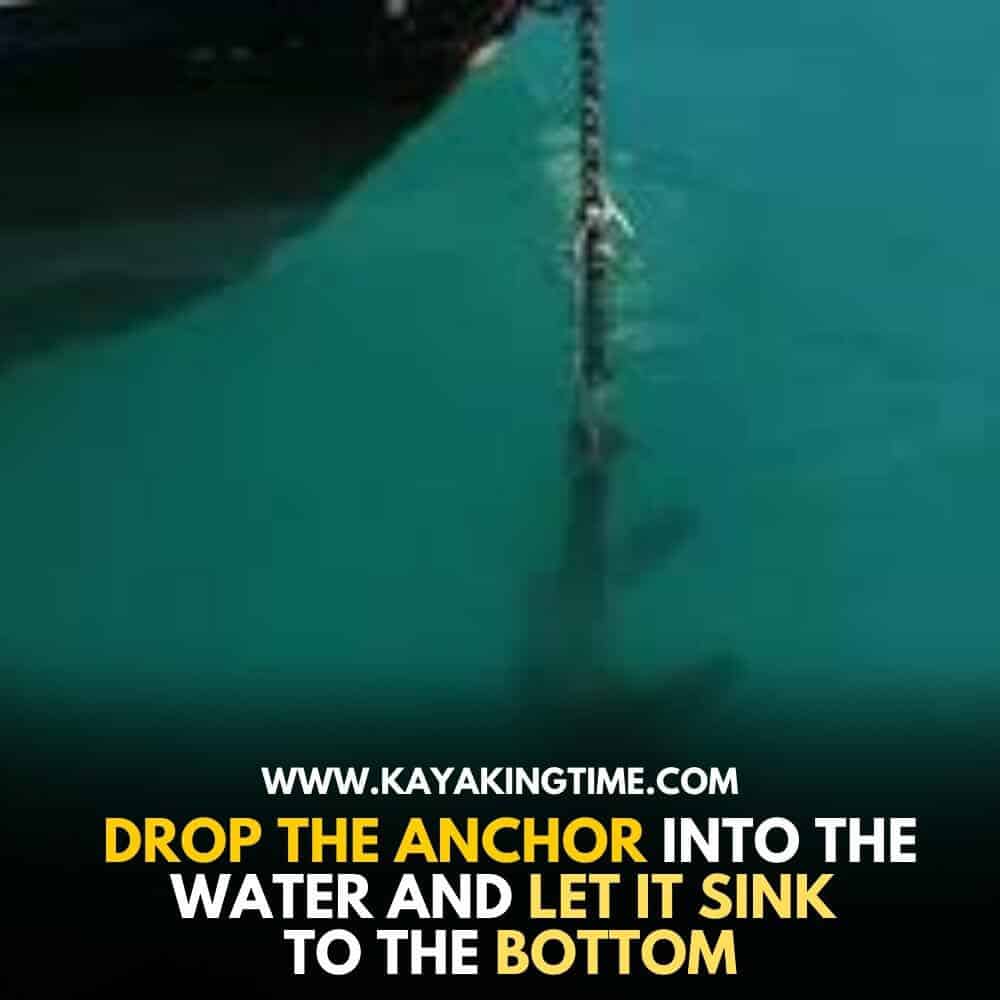
Step 5: Tie off the anchor line
The final step in securing your kayak is to tie off the anchor line. This will ensure that your kayak does not drift away from its intended location.
There are a few different ways to tie off the anchor line, but the most common is to use a figure-eight knot. This knot is easy to tie and is very secure.
Once you have tied off the anchor line, you can be confident that your kayak will stay put. This will allow you to relax and enjoy your time on the water without worry. So, take a deep breath and enjoy the peace of being out on the open water.
ANTI-SNAG ANCHOR SETUPS
Anchor Weak-Link Method
The best way to avoid snagging your anchor is to use the weak-link method. This involves attaching a length of rope or chain to your anchor that is much weaker than the rest of your setup.
That way, if your anchor gets snagged, it will break before the rest of your gear does.
There are a few different ways to set up a weak link.
- One popular method is to use a length of rope that is about one-third the breaking strength of your main line.
- Another option is to use a chain that is about half the size of your primary rope.
Whichever method you choose, make sure that your weak link is strong enough to hold your boat in place in calm conditions, but not so strong that it won’t break if things get rough.
Anchor Trip-Link Method
There are many ways to avoid having your anchor snag on the bottom while you are retrieving it.
This method is to use an anchor trip link. This is a length of line or chain attached to the crown of the anchor, with a buoy or float attached to the end. When the anchor snags, the float pops up and marks the location so you can retrieve it easily.
Anchor Bridle Method
Another method is known as the anchor bridle method.
To rig an anchor bridle, start by tying a loop in one end of your line. Then, thread the other end of the line through the loop to form a second loop. Next, tie another loop in the line about two feet above the first loop.
Finally, thread the third loop through both of the other loops and cinch it tight.
This setup will allow your anchor to ride up off the bottom and reduce the chances of snagging. It’s also a good idea to use a heavier weight than you would normally use when fishing with this setup so that your anchor stays put in deeper water or in stronger currents.
METHODS OF ANCHORING A KAYAK
There are some popular methods I use for anchoring a kayak.
QUICK-RELEASE KAYAK ANCHORING
A new quick-release kayak anchoring method has been developed that is said to be much easier and faster than traditional methods. The new system uses a quick-release clip that attaches to the kayak and a stake that is driven into the ground.
To use the new system, simply drive the stake into the ground at the desired location and attach the quick-release clip to the kayak. The clip will hold the kayak in place while you get in and out of it. When you’re ready to move to another location, simply release the clip and pull up the stake.
The new system is said to be much easier and faster than traditional methods, which can often be difficult to set up and take down. It’s also said to be more secure, as there’s no need to worry about tying knots or losing your anchor.
SIMPLE & DIRECT KAYAK ANCHORING
One thing that’s always important is finding the best anchoring method for your kayak. The SIMPLE & DIRECT KAYAK ANCHORING is one of the most popular methods for fishing kayaks because it’s easy to set up and doesn’t take up a lot of space on your kayak.
Here’s how the SIMPLE & DIRECT KAYAK ANCHORING method works:
1. Attach one end of your anchor line to your kayak’s stern cleat.
2. Run the other end of the line through the eyelet at the top of your anchor, and then tie it off to a bow cleat.
3. Drop the anchor into the water and make sure it’s snug against the kayak.
4. Clip your kayak’s anchor line to one of your anchor line holders, or tie it off under a bungee cord.
FAQs | How To Attach An Anchor To A Kayak
Q. Why would I need an anchor for my kayak?
An anchor can help keep your kayak in place in windy or choppy conditions, allowing you to focus on fishing or enjoying the scenery without drifting away.
Q. What kind of anchor should I use?
The type of anchor you choose will depend on the size and weight of your kayak, as well as the conditions you’ll be using it in. Some popular options include folding anchors, fluke anchors, and mushroom anchors.
Q. How do I attach the anchor to my kayak?
There are a few different methods for attaching an anchor to a kayak, including using a dedicated anchor trolley system or simply tying it off to a cleat or loop on your kayak. The key is to make sure the anchor is securely attached and won’t come loose.
How do I know how much anchor line to use?
As A General Rule, You’ll Want To Use About Seven To Ten Times The Depth Of The Water You’ll Be Anchoring In. For Example, If You’re In Ten Feet Of Water, You’ll Want To Use Between 70 And 100 Feet Of Anchor Line.
Are there any safety considerations when using an anchor with a kayak?
Yes, it’s important to be mindful of your surroundings and ensure that your anchor won’t drag and cause you to capsize or get tangled in underwater hazards. It’s also a good idea to carry a knife or other cutting tool in case you need to quickly cut the anchor line in an emergency.
